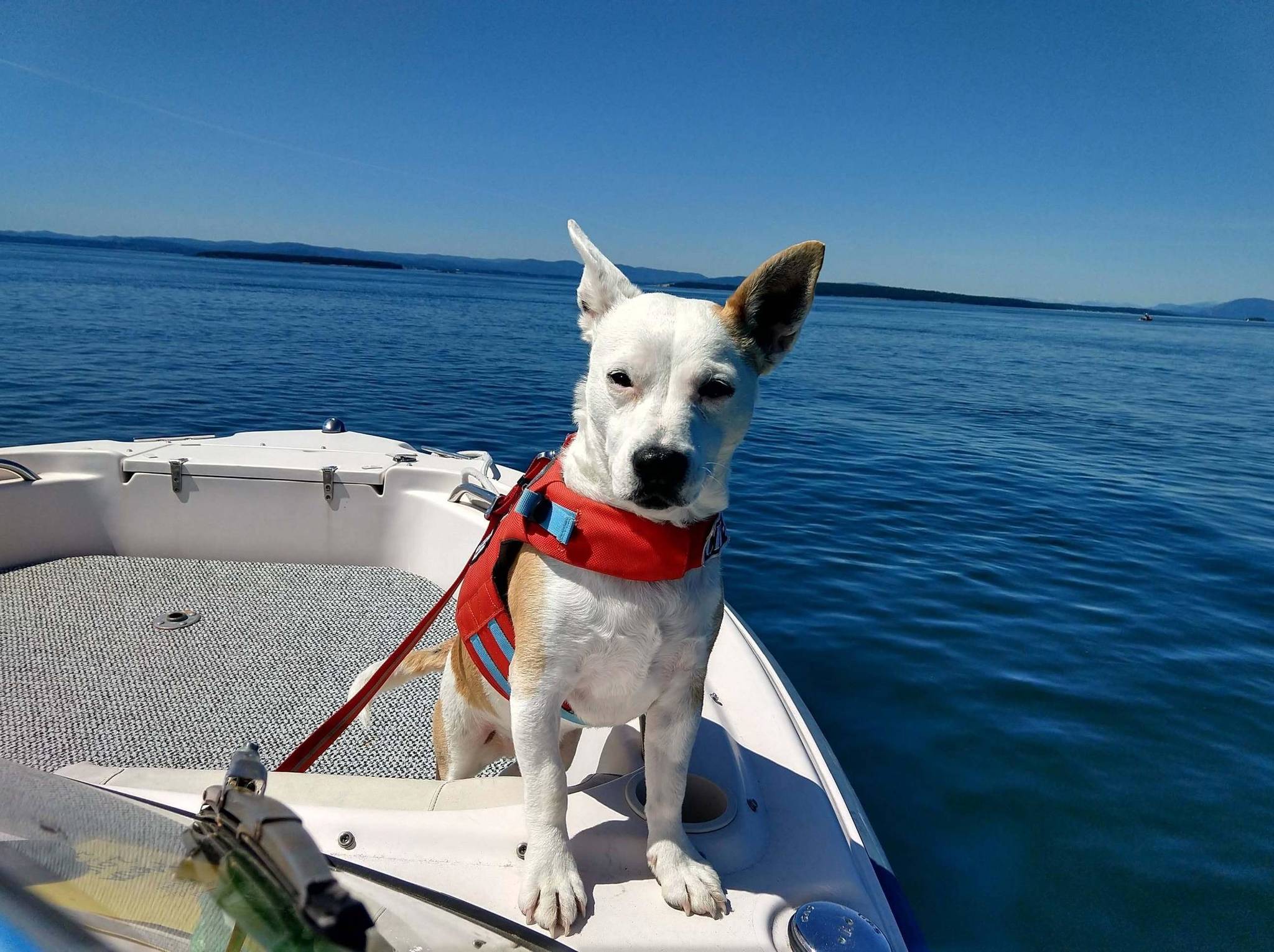Submitted by Deborah Giles
See Eba the Whale Dog on Disney+’s new program “It’s a Dog’s Life.”
From the streets of Sacramento to the waters of the Salish Sea, Eba went from being an abandoned cold, wet and lethargic puppy weighing only 3.5 pounds to being a Conservation Canine with the University of Washington’s Center for Conservation Biology. Today, Eba lives on San Juan Island, adopted in 2017 by killer whale biologist, Dr. Deborah Giles. Her goal in life: helping to save the endangered Southern Resident killer whales.
How can dogs help whales?
Eba is trained to detect whale feces, and this can reveal as much information about the whales’ health as a biopsy sample. Wild whales don’t poop on demand, but fortunately, it often happens at the surface, and if you can get to it quickly it can be collected for analysis.
Dogs are well-known for their remarkable sense of smell and have worked for decades in search and rescue and law enforcement. Their detection skills were first adapted for wildlife conservation by Dr. Sam Wasser—founder of Conservation Canines—to monitor a variety of endangered species from wolves to whales. Conservation Canines uses rescue dogs like Eba, whose play-motivated personalities can make them challenging as family pets, but ideal dog detectives, rewarded with playtime when successful.
Featured in the pilot episode of the new Disney Plus program “It’s a Dog’s Life,” Eba takes viewers along for a ride while she shows her crew where to go to collect floating fecal samples left by killer whales, and humpback, gray and minke whales.
What can we learn from whale poop?
An amazing amount! A single sample analyzed in Wasser’s lab can reveal the DNA of an individual whale and distinguish recent meals by species. It can identify a pregnancy, measure stress levels, and detect chemicals and other pollutants such as plastics. Not only can the overall health of the whales be monitored, but also the health of their environment — of the salmon, and the rivers and streams that flow into the Salish Sea.
Why is orca health monitoring important?
Monitoring tells us these orcas are hungry and stressed from living in polluted, noisy waters without sufficient salmon, specifically Chinook, to keep them healthy. By identifying the causes of starvation and disease, we can work with policymakers and fisheries managers to identify ways to increase the populations of the salmon they depend upon, and improve the health of the entire ecosystem they live in. Not just good for whales, it’s good for all of us.
To view, log onto Disney Plus and start watching – you won’t be sorry!



